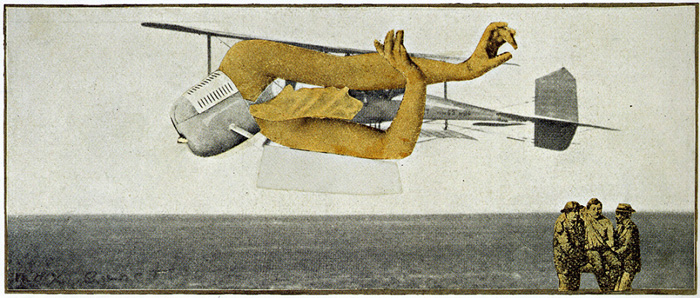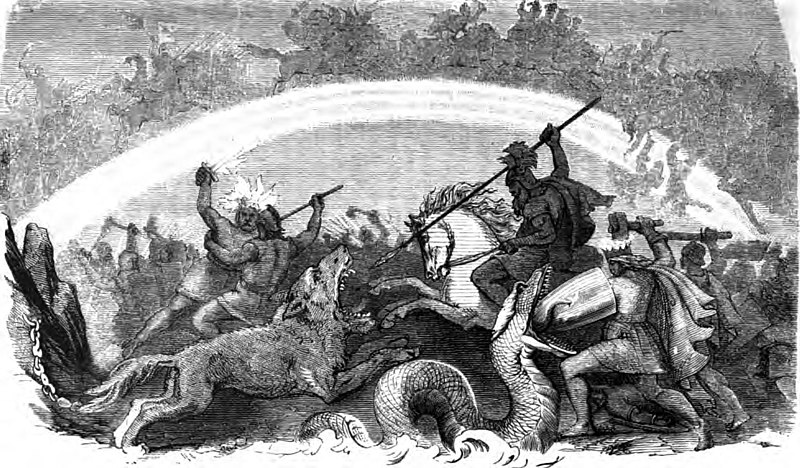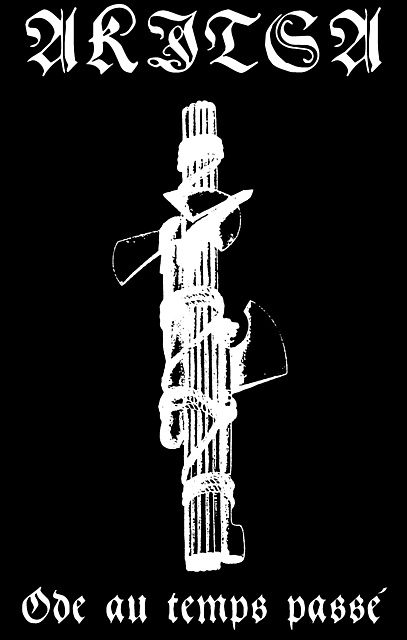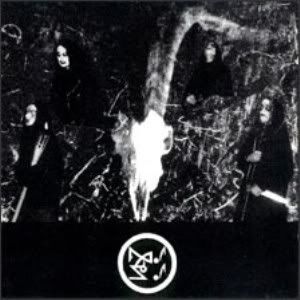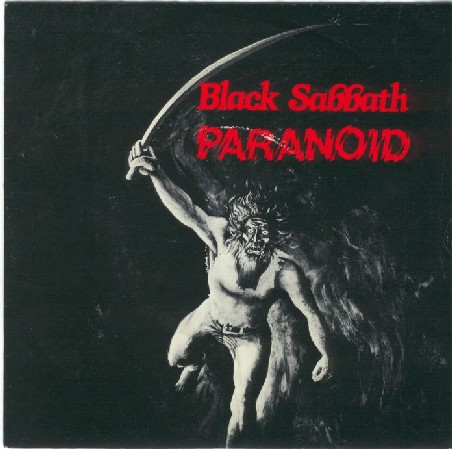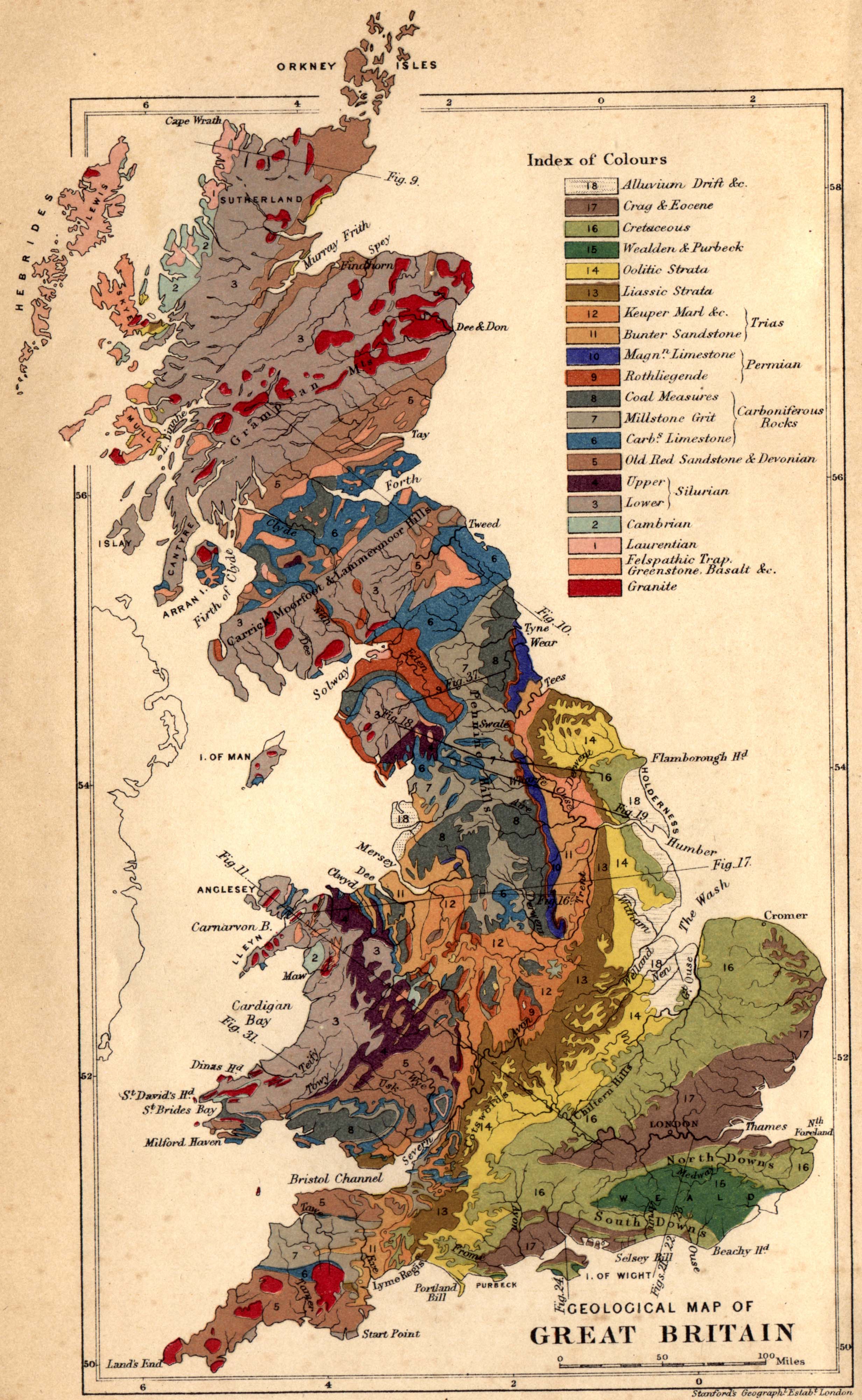
Dan O’Bannon’s 1985
Return of the Living Dead ruined zombie films. Or that is what intelligent critical thinkers are supposed to think. Coming out the same year as the manic, claustrophobic Day of the Dead, Return made zombies self-aware kitsch, made the whole thing about moaning brains…, about Linnea Quigley stripping in a graveyard to the thought of being eaten alive by rotting corpses, of the kind of joke that can only end in our current idiotic quagmire of LOLzombies and zombie apocalypse survival guides. It is the beginning of the end, the point at which the fissures of crass commercialism, elision of left critique, and general bullshit can be detected. None of this, however, is the case. Return is a startling film, shot through with deep, unabiding sadness, visions of collectivity, the blackest of comedy, a treatise on pain and memory, an unsteady shaking oscillation between and cobbled together construction of cheap gags, gory excess, and moments of lyrical quiet. Of course, the ways in which it is remembered – and perhaps, the dominant way in which it asks to be watched – is rather kitschy, cheap, and ultimately not that interesting. Yes, there is the cheap frisson of auto-referentiality, of people talking about how to kill zombies based on the Romero movies they have seen. There are really shitty jokes about eating brains. There are running zombies who chase and swarm. (Which, contrary to the supposed innovation of 28 Days Later and its imitators, are nothing new. Idiotic starving rage hordes that also run are.) There is generally a film populated with petty, hysterical, and generally moronic people. But in the midst of all this that is rather forgettable, these other unexpected blooms emerge.
It is, from the start, a film about work and non-work, about those caught in the structures of employment and those punks who seemingly opt out. In a medical supply company warehouse, Freddy – coded as a semi-punk kid aiming to make a working class run at it – starts his first day of work. It will consequently turn into a film about the worst first day of work in history, yet one which curiously demonstrates the deep hooks of an ideology of respect and worry about the job you have: in the midst of the soon-to-come zombie apocalypse, Freddy is ordered to watch his foul language (“if you want to keep your job”). On this first day, to impress, scare, and gently haze him, his older coworker, Frank, tells him that the events of that famous film, Night of the Living Dead, were very real indeed, but that the film got it wrong. That it was some military testing of an experimental chemical, the soon to be infamous 245 Trioxin, which caused bodies to jerk about. The military dealt with it predictably, sweeping it under the bureaucratic rug, sealing the bodies in barrels and then promptly losing track of their location. Of course, those barrels happen to be in the basement of this particular storage facility. And, of course, what would be breaking in the new guy without showing him a corpse in a military issued barrel?

1985 was evidently a big year in connections between the undead and the military-industrial complex. Dawn of the Dead set in the bunkered world of major military spending, Return set against the backdrop of the biotechnologies developed and left to wreak havoc elsewhere, in other times and places. In a horrible prescient echo forward to Hurricane Katrina, we are wrongly assured that the zombie cans are safe.

FREDDY: “These things don’t leak do they?”
FRANK: “Hell no, these things were made by the Army Corps of Engineers.”
We know now all too well what sort of guarantee this is, and sure enough, the barrel cracks and spews forth its toxic load.

Before we return to the inevitable result of this contagion, we are offered a glimpse of another sort of contagion let loose onto the American landscape, the idiocies of the self-declared punks, here in every pop culture permutation: tough leather and pierced skinhead, Rick James-esque fancy dresser, over-sexed/sexually frank dyed hair slut, tag along “good girl”, couple of New Wavers, the obligatory mohawk and dirty Converse wearing weirdo.

Until the outbreak of the undead forces a shift in their non-routines, their daily life seems to consist of making inane pseudo-Bataille statements (“I like death.” “I like death with sex.”), driving around carefully to preserve gas, visiting cemeteries, and declaring the various ways in which they are punk. We should draw out here a key question, not just for this film, but for our approach to this genre as a whole, namely, what movie do these people imagine themselves to be in? (This is an approach to watching and talking about movies I owe entirely to Marshall Leicester.) The answer in this case has to be, at the very least, three-fold. Frank, Freddy, and their boss Burt try their damnedest to play the parts inherited from a Romero movie: both their failed tactics and increasingly frustrated way of talking about those failures derive from the sense of, it worked there, why not here? In addition, they are indebted to some imaginary Abbot and Costello sketch about the perils of the working world. The punks have watched a mainstream news report on the “punk movement,” early MTV, perhaps a documentary on British punk, and, apparently, this movie itself, in a weird doubling back on a film that distinguishes itself in part by its punk soundtrack and iconography (and with the film’s tagline, “They’re Back From the Grave and Ready to Party!”). And the zombies? A longer question to be addressed, but we might say as a start that they didn’t particularly care about Night of the Living Dead but found Eisenstein’s Strike and Pontecorvo’s Battle of Algiers worth remembering.
Back at the medical suppliers, we’re at the early stages of another fierce return of the repressed, now staged on the most bodily of levels, a mute raging of surplus-life, the will to survive triggered and grown monstrous. Hacking and coughing, Frank and Freddy leave the basement to enter some of the more remarkable minutes in any zombie film I’ve seen. The gas, it appears, not only animates whole-bodied human corpses. It is an obscene principle of life itself, a whisper to everything that has lived that it never stopped living. A bisected dog for classroom use barks and pants, its exposed organs twitching.

A display of pinioned butterflies flaps its wings gently. And a cadaver hung indifferently by meathook in a freezer wakes up very, very angry about this state of affairs.

The workers and their boss, as we would expect in a film like this, decide that dealing with a representative of the pissed-off undead means killing him more thoroughly. But, as we learn in this film, in an echo of that first moment of realization in Night of the Living Dead (the “funny, it’s not usually this hard to kill the poor”) is that it is no longer about destroying the body as a whole by removing its head. Instead, what you get is this:

An even more furious, acephalic zombie running and flailing blindly through the warehouse. The sightless, thoughtless refusal to die. Tied up and hack-sawed apart, the severed limbs shake in rage. Flesh melted away with acid, the bones will not be quiet. And incinerated, the ashes may lay still, but the desperate insistences of the body do not stop. They rise up in a cloud of smoke, to meet the rain and trickle down through grass, earth, and coffin lids, to pass the message to the other dead bodies that hadn’t gotten the word: you never stopped living.

In terms of transmission, Return represents an odd intermediary between the global totality cause in the Romero cycle and one-to-one infection logic emphasized in recent zombie culture. Here, there is a discernible event (the army created a gas with certain properties) and that event has to be directly transmitted (exposure to the gas or something already affected by it), but it remains strangely diffuse, raining down on the dead and the living alike. Furthermore, its effects break with either of these opposed models. It doesn’t give the living a virus or surplus-life that “resurrects” them after death, it doesn’t create a condition that only affects those who die after that condition has come to be. Yet the zombies we see in the film are, more than anything, a continuation of what they were in life, far more than in the parodic shambles of Romero’s shoppers and munchers. Here, they run, they talk, they scheme and fool, they work together toward common goals. If the thought of surplus-life hangs heavy over the whole genre, it does so here negatively. It is decisively present, in that form of a fanatical insistence of all once-living matter to flex its rotting muscles. And as for those who were alive when they face the gas, indeed, they become “dead” in the eyes of the living, but more than that, they become unable to truly die. Above all, the motivation to this uncanny life is not the urging of the body itself or a deep impulse transmitted by radiation or saliva borne bacteria. Even the gas itself seems a cover story, a phenomenally present form of transmission that isn’t ultimately about chemicals. Instead, it is about thought, a death-knowledge, a knowledge – and an antagonism – strong enough to counter life.
This death-knowledge, which is less an allegorical reading of the film than a close sense of just how we see the transmission and “reanimation” work throughout it, is a certain awareness. It simply makes you aware of your own death, finds some lingering shred of consciousness and infects it, brings the faint memory of death into the dominant horizon, and with it the “pain of being dead.” Crucially, this isn’t just an intellectual knowledge. It is somatic, it speaks another tongue to the minimal units of living matter which, once made aware, can not forget and will not settle down. The implication which forms a powerful nihilistic core to the film – one which entirely exceeds the petty immoral sex-and-death nihilism of the costume punks – and which cannot be shaken is that being “alive” is solely the consequence of ignorance, of not being cognizant of your own decay.

Nowhere is this more evident than with the workers exposed to the gas. The major arc of the film is their story, as they move from mock frustration (with a bit of real terror) to a deep sickness, an ontological horror as they become dead without dying. The gas gives the same message to the living and the dead (Did you know that you are dead? What are you going to do about it?) , yet while this knowledge animates the dead, stirs them into an action impelled by the pain of awareness itself, this shock to thought produces a mournful stasis for the workers. As well as dialogue that would be quite funny if it weren’t injected with a rending, lingering sadness that we cannot not share. When the paramedics are called to treat them, and find them shivering,death-shroud pale, with no pulse, temperature that of the cold morgue, they are understandably stupefied.
PARAMEDIC: “Because technically you’re not alive. But you’re conscious. So we don’t know what it means.”
FREDDY: “Are you saying we’re dead?”
PARAMEDIC: “Let’s not jump to conclusions.”
PARAMEDIC: “I didn’t mean you were really dead. Dead people don’t move around and talk.”
Because technically you’re not alive. But you’re conscious… in a move familiar the horror genre, we are supposed to be unsettled, spooked, or disturbed by the prospect that animating consciousness – and with it, the prospect to harm us – can exist, in a rupture with the everyday, in forms that exceed the living. That there are consciousnesses alien, and likely hostile, to our own. The standard narrative logic of those films tends to function via initial disbelief (how could this be possible?), then a recognition that belief must be suspended in order to deal with the threat, a conquering of the threat, and a return to “normal” that can never be truly normal again, now infused with the knowledge that there are textures and shapes of being that exceed our ability to grasp. All that we need to grasp is how to deal with them, with adequate violence and skill. In Return, we are indeed unsettled. But this unsettling is the consequence of a far darker operation: not that there are other kinds of perhaps undead consciousness, but that the very condition of normal life, supposed to be the normal condition and cause of consciousness, is itself a mere symptom of actively repressing what we know to be the case, that we’re dying from the start, death warmed over and stretched out over the duration of a heart’s muscle tissue winding down, a self-tiring clock. Consequently, the return to “death” is the approach to the original state of things.

Almost. What this leaves out is the messianic undertones of the film and this schematic, which establishes two “false” poles of false consciousness to be avoided and the hard work of convincing others to join, via a sort of radical zombie pedagogy, a third way, the undead truth. The message begins with the gas, but it becomes part of the flesh of all that it touches, so that when the corpse is burned, it is the conviction and knowledge now part of the flesh itself which turns to smoke and spreads. The structure is essentially missionary, soldiers of God spreading the word: Have you heard the good news? Jesus died for you. Or, in the case of this film, Have you heard the bad news? You’ve already died. A necro version of the sunglasses that lay bare the class/alien race structure in Carpenter’s They Live, once you see, you can’t go back to seeing otherwise.
What of brains…, the constant, self-mocking cry kicked off in this film, that the figure of the zombie can’t seem to shake? We should consider it two ways, in how it derivates and deviates from the Romero model and on the terms established by the film itself. In Romero’s Dead series, the zombies have no particular love or appetite for brains. (One might imagine a particular distaste for them, given the difficulty of opening up a skull, even for hordes of the undead who aren’t very adept at using tools.) They fixate on general gutting and tearing, a non-targeted sloppy free-for-all. And while the never fully given explanations of why varies from film to film, the rough consensus is that they do it because of some deep, and now misrecognized, memory: of a savage primal past, of the mechanism of hunger which no longer physiologically applies, of rampant consumer consumption. In each case, the point is that they do not chose to do it and that somewhere along the way, the message got mixed up. (“Consume commodities? Fuck, we’ve been going about this all wrong.”) Things are quite different in Return. The zombies know very well what they are doing, and they’re quite good about making sure it gets done. It is an active choice, one that can be delayed in order for the greater collective enterprise of spreading zombie mayhem. And if anything, the problem isn’t that they don’t remember clearly enough. It is that they remember far too clearly, an awful clarity of mnemotechnic pain, searing reminders of the decay of all things living.

The startling moment in which this is fully laid bare is one unlikely to be forgotten by any who have seen the film. A long-dead, grave husk zombie captured by the living, with nothing left of her but her head, shoulders, and an exposed spine swaying to and fro, is interrogated on an examining table. When asked “why brains?”, she responds in a hissing whisper, “The pain of being dead… I can feel myself rot.” Pressed further as to the connection between this “pain” (which already seems closer to the pain of knowing you are dead) and brain lust, she replies, “Eating brains makes the pain go away.” Obviously, our interest is not in speculating ways in which the consumption of brains might physiologically dull the pain of a rotting body. The film itself has little interest in this either, leaving any direct connection opaque and pointing in more compelling directions. If it is knowledge that causes this pain, a certain brutal deconstruction, willful misuse, and redeployment of knowledge can be the only solution. An overliteralized version of giving you something else to think about, albeit thoughts which enter through the guts rather than ears and eyes, swallowing a different sort of knowledge, distracting yourself from what you can’t stop thinking about. (A distraction that never lasts: how could it when we never stop falling apart?) And more sharply, a sort of pain sharing, an act of spreading the bad word. Inheriting a pain inherent to your position in a system you didn’t choose, solace comes in knowing that this pain – and what it drives you to willfully choose to do – is not singular but collective. If, as Fredric Jameson puts it pithily, “History is what hurts,” Return is the story of how the already dead attempt to write a history “back from the grave” and into this world, a trajectory in reverse, written in a pain that are doomed to feel and that they demand we all feel. It’s hard to envision another cinematic instance of such direct propaganda work. Want to know what the pain of thought and thought of pain is? Give me your head for a moment.

Out of this unyielding “pain,” one has two choices, at least according to the film: suicide or mass participation in knowledge-sharing. (The other non-choice that we see pursued, with no great success, is to skulk around a cellar, biting into the brains of idiot punks who have little knowledge to share , or to wait around until you “turn” to make a bad joke and go for your girlfriend’s head.)

The first choice we witness in a moment that genuinely shares pain beyond the film, to all who watch it, as Frank, now “technically not alive” prays briefly, removes his wedding ring, and pushes himself into the blazing fires of the crematorium. Yet even this attempt to cut himself out of the cycle, to refuse to participate in the zombie holocaust, cannot succeed. It may remove his ongoing personal pain, but as we witness earlier, it is the fact of burning and the transmission of the buried message in the smoke, out into the night air, that allows for the mass dissemination of knowledge. In opting out of the cursed game, Frank becomes a martyr for a cause he died to avoid supporting.
If Frank’s death is the awful pathos of both cyclical inevitability and a broken man, the other alternative is the joyous center of the film, its moments of genuine cheers from the audience, and the “utopian” kernel of it all. It is collectivity formed out of what could be a crushing awareness, knowing that you are not even special in the ontological pain you feel, that you are just one of a growing horde of those powerless to change it, to die properly, to quit the pain. Yet against either the dysphoric retreat or the retreat into the fantasy of the irrational – I will act as irrational, bloody shambling horde like, as the system that made us – that linger at the edges of this first knowledge emerges a new rationality.
This is a crucial point, for much of the ideology of zombies hinges on the assumption of their irrationality. Sure, maybe they once knew what they were doing, and now remember a broken shard of it. Or maybe, in the later iterations of the Romero cycle, particularly Land of the Dead, they can move toward an incipient group knowledge, rudimentary use of tools and implements, basic swarm strategies, and so on. Return shows something different altogether: what if what this thing we assumed from the start to be, at least initially, mindless, irrational, mute in its anger and illogical hunger, what if it has been rational all along? What if it not only can hurt, but comprehends this hurt? And what if it realizes that this pain is not individual but collective? What if the ways in which it aims to destroy the system that wants to destroy it is rational?
Return approaches, in the midst of its gags and rockin’ soundtrack, these very serious questions, questions that have little to do with the fantasmagoria, as we will venture. The closest it gets is to ask: my God, what if they get their shit together? The threat – and the supposed horror we feel at witnessing an uncanny imitation of almost-life – is not that of an otherness that shows our complicity in mindless structures of consumption or of an underlying savagery, not blind groupthink or hive mind, not of never being at peace and forced to wander, not of the very unearthing and undermining of the natural order of things. It is the threat of collectivity itself. It is something we have learned to be fear, not the end of romantic “individuality” itself but the prospect that autonomous subjects may recognize the limits of that autonomy and begin to act together, an unholy and uneven assemblage of different tactics, motives, and skills unified into a shared weapon against this arrangement of the world.

“Send more paramedics…”
It is also, in this case, getting onto the ambulance radio to pretend to be a concerned citizen and call for more paramedics to deliver into the mouths of your fellow zombies waiting in the shadows. It is dressing up in the policeman’s uniform, acting very official, and directing drivers to where they will meet their untimely end (or, depending on your perspective, be “convinced” of the fact of their deadness and the need to do something about it). It is being very rational and coldly calculating about how to achieve and enact your apparent irrationality.
The world of the living is, to be sure, not interested in the utopian potential of this mode of organization and antagonism. Having learned that Trioxin has been leaked, with all its attendant effects, Colonel Glover receives a call in bed and makes the decision, still in his monogrammed pajamas, to nuke the town.

A high, keening whistling as the zombies, their victims, and those trying to avoid being either look up and wait. And then, the mushroom cloud rises at dawn.

We learn that it was a complete success, that the threat has been contained, and, even more fortunately, that the rain is putting out the fires. The rain, which of course, now carries the atomized microparticles of the death-knowledge, sprayed infinitesimally small into the atmosphere, the message of antagonism and pain diffuse, now carried in clouds and tiny water droplets to fall onto other towns, onto other places of the dead. Here we go again.





